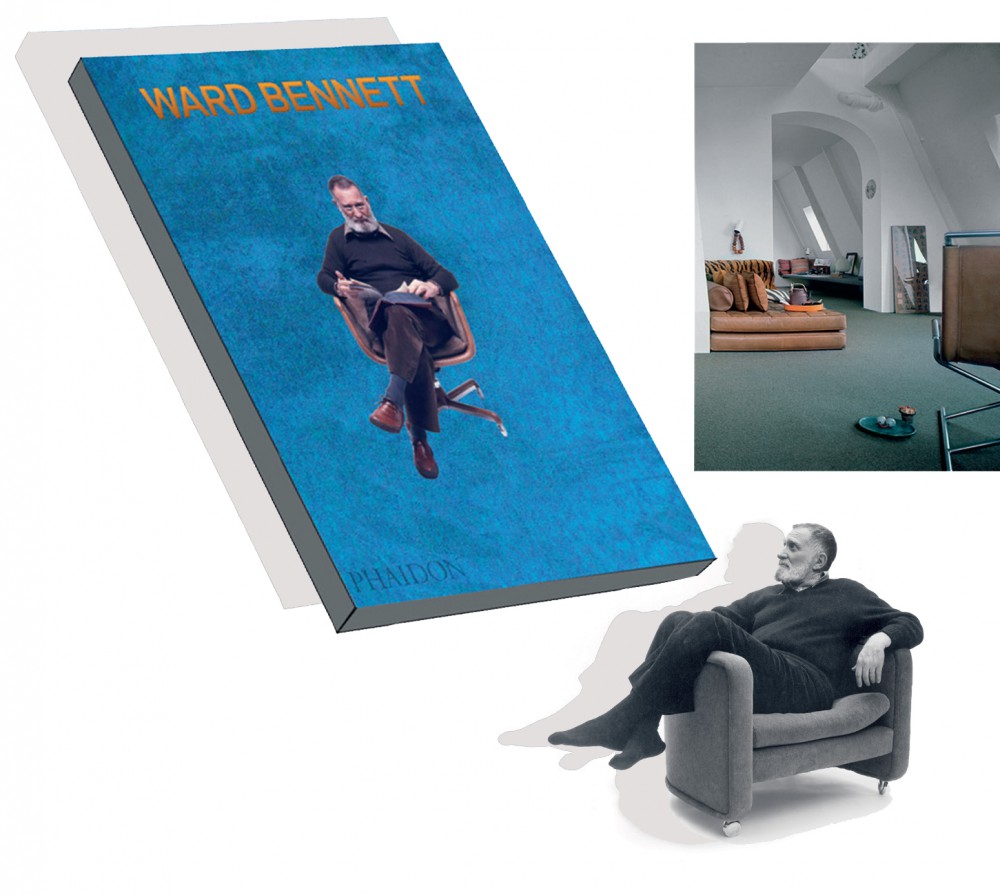BOOK CLUB: WARD BENNETT

There was a curious air of mystery and cultivation about the late American designer Ward Bennett (1917–2003), both in his personality and in his work. Alledgedly born Howard Bernstein in the Washington Heights neighborhood of Manhattan, the son of a vaudeville actor, he left home at 13 to work in the garment district, and would go on to craft his own creation myth in much the same way he would later craft the particular atmosphere of one of his interiors or carefully shape a wooden chair. Remarkably, there has never before been a book about his work, but to celebrate his centennial this year, Phaidon, in collaboration with Herman Miller and Geiger, is publishing a handsome monograph titled simply Ward Bennett.

Showcasing the multiple registers that the prolific designer explored over the course of his five-decade career — from table- and glassware to chairs, interior design, and entire houses — the 280-page volume includes an introductory rumination by the architect John Pawson (“We both started out in fashion textile businesses and had no formal architectural training”), an essay by Pilar Viladas, and a long interview with Bennett himself, recorded in 1973 for the Smithsonian Archives of American Art. A preface by the book’s editors and designers Elizabeth Beer and Brian Janusiak of Various Projects points to the oft-cited “impact of (Bennett’s) mentors, friends, and colleagues on his practice,” the list of which is long: Brancusi (for whom he claimed to have briefly worked in Paris), Georgia O’Keeffe, Hans Hofmann (his night-school painting teacher), Le Corbusier, Louise Nevelson, as well as Jackson Pollock, Saul Steinberg, Ellsworth Kelly, and Tennessee Williams.

But more important than Bennett’s social connections is his work, and the book reveals the lifelong values that guided him. Bennett’s overriding interest was in the art of living, and he defined a vocabulary of comfortable luxury in his designs for executive offices and the private residences of the wealthy. Perhaps most representative of his work is Bennett’s own apartment, realized in the 1960s in the famous Dakota building on New York’s Central Park, where he converted the flagpole topped central roof pyramid into a loft featuring many elegantly utilitarian details, including a dining table wrapped around the pole’s base. What comes across more than anything in this monograph is that Bennett, an avid traveler, truly knew how to live, and that he intended from the outset to design every aspect of his world. As he put it, “I design interiors, and furniture, and flatware, and so forth. But I think the way I live is maybe the most meaningful.”
Text by Tiffany Lambert.
Taken from PIN–UP 23, Fall Winter 2017/18. For more Ward Bennett also check out PIN–UP 15, Fall Winter 2013/14, featuring the apartment he designed in the early 1980s for fashion designer Reva Ostrow.

